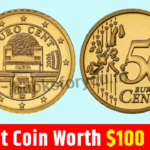The Bicentennial Quarter, minted in 1976 to celebrate America’s 200th anniversary of independence, is a fascinating piece of U.S. coin history. While most of these quarters are worth their face value of 25 cents, some rare variations have fetched significantly higher prices among collectors. In this article, we’ll explore what makes the Rare Bicentennial Quarter valuable, how to identify them, and why they continue to capture interest in the numismatic world.
History of the Bicentennial Quarter
In 1976, the U.S. Mint released a special Bicentennial coin series, including quarters, half dollars, and dollars, to honor the nation’s 200 years of independence. The Bicentennial Quarter features a unique dual date “1776-1976” on the obverse (front) and a special reverse design of a Colonial Drummer by Jack L. Ahr. These quarters were struck in two primary compositions: clad copper-nickel (regular circulation) and 40% silver (special collector’s editions).
Why Are Some Bicentennial Quarters Valuable?
Most Bicentennial Quarters are worth only face value, but certain factors can increase their price significantly:
- Minting Errors – Quarters with double strikes, off-center designs, or die breaks can be worth hundreds or even thousands of dollars.
- Silver Composition – The 40% silver quarters produced for collectors have a higher intrinsic value.
- Proof and Uncirculated Coins – Coins in mint condition (MS-67 or higher) or proof sets can sell for a premium.
- No Mint Mark or Rare Mint Variations – Some quarters with missing mint marks or unique production variations fetch higher values.
How Much Are Rare Bicentennial Quarters Worth?
Depending on their condition and rarity, some Bicentennial Quarters have sold for impressive prices:
- Regular Circulated Quarters: Still worth $0.25.
- 40% Silver Uncirculated Quarters: Valued between $5 – $20, depending on condition.
- Proof Silver Bicentennial Quarters: Can range from $10 to $50.
- Error Coins: Depending on the type of minting error, some have been auctioned for over $3,000.
- Highest-Grade Bicentennial Quarters (MS-67+): Sold for up to $6,000 – $8,000 at auctions.
How to Identify a Rare Bicentennial Quarter
If you think you have a valuable Bicentennial Quarter, here’s how to check:
- Look for Mint Marks:
- “D” (Denver Mint) and “S” (San Francisco Mint) are common.
- No mint mark or special variations could indicate rarity.
- Check for Silver Content:
- Silver quarters weigh 5.75 grams, while clad quarters weigh 5.67 grams.
- The edge of a silver quarter will be solid silver, while clad quarters have a copper core.
- Inspect for Errors:
- Misaligned strikes, doubled dies, or missing elements can increase value.
Where to Sell Rare Bicentennial Quarters
If you have a valuable Bicentennial Quarter, you can sell it through:
- Online Coin Marketplaces: eBay, Heritage Auctions, or PCGS.
- Local Coin Dealers: Many shops specialize in rare U.S. coins.
- Coin Shows and Collectors’ Fairs: A great place to meet buyers and experts.
- Grading Services: Getting your coin graded by PCGS or NGC can increase its market value.
Why Bicentennial Quarters Remain Popular
Even decades after their release, Bicentennial Quarters continue to intrigue collectors. Their historical significance, unique design, and potential value make them a must-have for numismatists. Whether you find one in your pocket change or inherit a rare piece, it’s always worth checking if you have a hidden treasure.
Final Thoughts
While most Bicentennial Quarters are only worth their face value, rare variations can fetch thousands of dollars. Understanding what makes them valuable, how to identify them, and where to sell them can help you make the most of your collection. If you’re lucky, that old quarter in your drawer could be worth much more than 25 cents!





